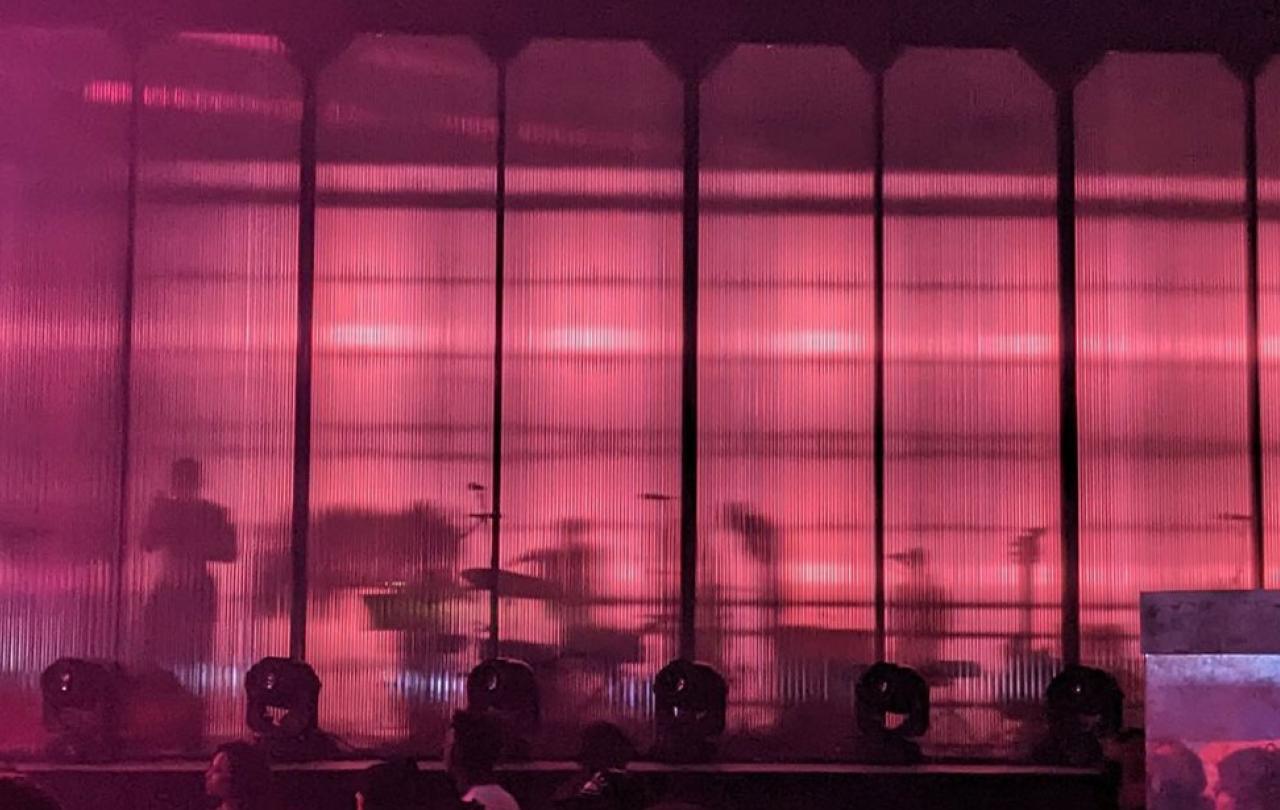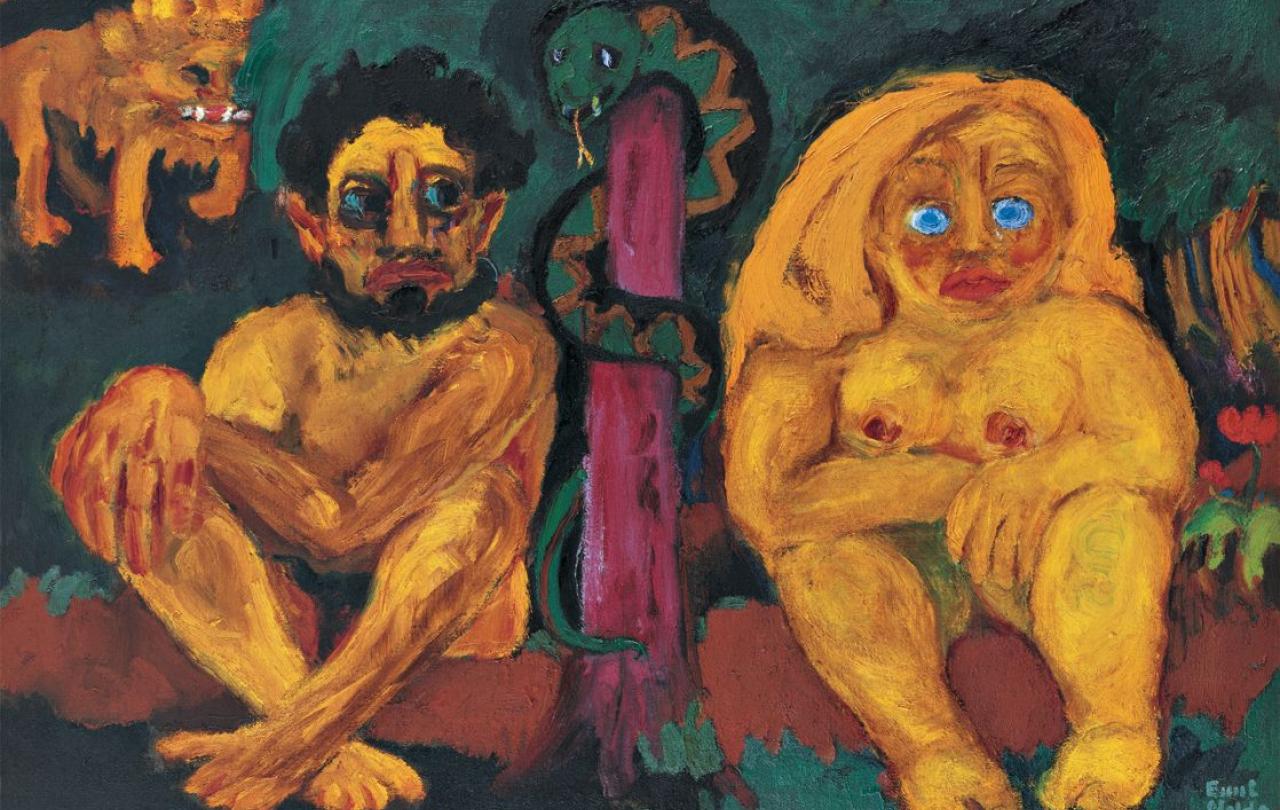
The morning found me sat upright at my work desk between two tasks. One half of me was talking to my colleague and the other was debating the ticket prices on my computer screen. My favourite music group SAULT had just announced their first ever live show and I was one of the lucky ones who had managed to fight through the ticket queue to get to the point of purchase. The group had put out nine studio albums in the past four years and had never given a single interview nor put out a piece of promotional material that would reveal their identities. I was excited like so many others to finally get a glimpse behind the veil.
The only problem was that the ticket price was high. Yes, it was my favourite band, but they had never done a live show before. How could I be sure it would be worth the expense? Across social media others were expressing similar doubts. SAULT had never played a live show before. The venue they’d chosen was an abandoned IKEA - hardly the Roundhouse or the Royal Albert Hall. There would be no alcohol at the venue, how were gig goers supposed to have fun? Given that the band's lyrics often focus on spiritual themes, and that high ticket price, was this another case of a religious group trying to financially exploit their followers. While SAULT have not professed to be a Christian band, a lot of their lyrics focus on spiritual themes and reference God as Lord. The show itself was called ‘Acts of Faith’ after all. By the time I had deliberated and decided that I would take the chance and get the tickets they were gone. The show had sold out.
Three days later, footage from the show began to circulate online. Videos revealed elaborate stage designs, dance sequences, choir performances, a full orchestra, exhibitions, fashion shows and so much more. Testimonies flooded the timeline with “it was the show of the year” being a common refrain. Many of the doubters came back to say how wrong they were, how the show was worth so much more than the price. How the artists behind SAULT were seasoned professionals and this was anything but an amateur performance. How the venue was perfect, and any other place would not have worked. How the lack of alcohol didn’t matter because there was such a ‘heavenly’ atmosphere.
Scrolling through all the content I realized how perfect the title ‘Acts of Faith’ was for this show. Were there was no assurance that the cost of the show would be worth it, it would have been an act of faith to trust the artists and buy those tickets anyway. It would have been an act of faith to trust their choice of venue, of making it an alcohol-free event. I imagine it would’ve been an act of faith for the artists themselves too - an act of faith to step out and produce such an elaborate show for the first ever live event. An act of faith to pour all their effort into it without any experience to say that it would work out the way it did.
Those SAULT fans who saw the doubts and uncertainties and still decided to act in faith were able to witness something magical.
As I watched this all unfold, I couldn’t help but think of how much courage it takes to step out in faith in these ways. As a trainee psychologist, my studies tell me that faith is a subset of hope. One which is associated with positive mental health and wellbeing, resilience, coping with anxiety and healthy relationships. Faith tends to have an additive impact on our lives.
Doubt on the other hand, is a protective mechanism that helps us to minimize risk so that we can preserve ourselves, others or our resources. Doubt often works by integrating our past experiences into our present. For instance, those who shared their doubt about the quality of SAULT’s first live show did so for good reason. Many first artist shows are underwhelming for fans. Spiritual leaders and groups have exploited followers in the past. An old IKEA hasn’t historically been the best venue for esteemed musicians. On that evidence, attending the show seemed like it would have just been a loss. However, what actually happened was quite the opposite. Those SAULT fans who saw the doubts and uncertainties and still decided to act in faith were able to witness something magical. It reminded me of John, one of the followers of Jesus, who wrote: ‘blessed are they who have believed but not seen’. Sometimes, we want to see the evidence of our faith so that we can believe we have good grounds on which to make a decision, and that is wise. But sometimes, faith asks us to go beyond our wisdom, to go beyond our lived experiences and to be open to something new that we haven’t seen yet.
Of course, not all acts of faith work out the way that SAULT’s first show did. Sometimes we step out in faith and rather than having our hopes realized, we are met with disappointment. We are met with our fears coming true and met with risks that become real losses. Though those moments can be deeply painful, we can at least be glad that we had the courage and ability to hope at all. Those moments remind us that sometimes the act of faith is the end in itself, they remind us that it is not about the reward of faith, but about keeping the flame of hope alive underneath it.
Though I won’t be able to look back years from now and say I was at SAULT’s first show as I would’ve liked to - thanks to the password I couldn’t recall, I can look back and say that morning where I was sat at my desk between the faith and doubt taught me a valuable lesson: faith is not the absence of doubt, but the ability to see beyond it - to choose beyond it. In 2024, I think that’s a lesson worth holding on to.





